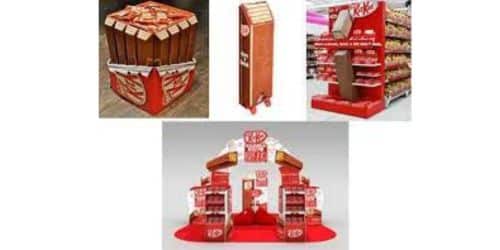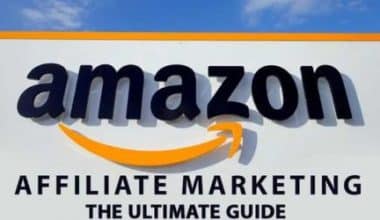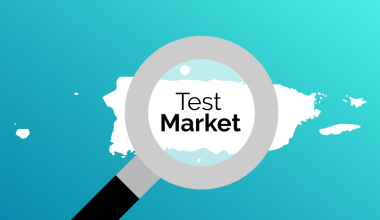Whether it’s a physical or online store, businesses are constantly on the lookout for strategies that will compel customers to buy their products or services. One of the strategies that have proven to be effective over the years is the “Point of Purchase” (POP). Point of purchase is an advertising display strategy that businesses that desire to captivate their target audience, maximize sales, and forge lasting brand connections adopt. If you desire to fully understand its definition, how it works, and its benefits to businesses, then we’ve got you covered.
What is the Point of Purchase?
“Point of Purchase” (POP) refers to the location where a consumer makes a buying decision and completes a purchase. In the context of marketing and retail, understanding and optimizing the point of purchase is important. It’s a strategy that businesses adopt to influence consumer behavior and increase sales. Whether it’s a physical store or online store, point of purchase is a key aspect of retail and marketing. It’s a point of decision-making and transaction completion, where businesses can employ various strategies to influence consumer behavior and drive sales.
How Does Point of Purchase Work?
The term “Point of Purchase” (POP) pertains to the specific location and moment at which customers finalize their purchasing decisions and carry out transactions. The process encompasses a range of tactics. Generally, it includes store layout, product placement, in-store promotions, and interactive displays. Businesses deploy each of these to exert influence on customer behavior. The point of sale (POS) systems integrated into checkout counters are responsible for managing and processing the actual transactions. Merchandising techniques, such as the utilization of visual displays and demonstrations, serve to enhance the overall appeal of a product. The primary objective of POP (Point of Purchase) is to stimulate spontaneous buying behavior. This will enhance sales performance, as well as the overall quality of the shopping journey.
What Are Examples of Points of Purchase?
The following are some of the examples of Point of Purchase (POP) techniques and strategies:
- Checkout Displays:
- End Cap Displays
- In-Store Demonstrations
- Product Bundling
- Interactive Kiosks
- Limited-Time Offers
- Product Sampling
- Cross-Selling and Upselling
- Eye-Catching Signage.
- Digital Screens
What Is the Difference Between Point of Sale and Point of Purchase?
Point of Sale refers to the precise moment when a customer completes a transaction by paying for products or services. On the other hand, the Point of Purchase (POP) is a more comprehensive concept that encompasses the marketing strategies and environments that influence a customer’s purchasing decision prior to reaching the actual transaction point. However, both are integral components of the comprehensive retail and marketing strategies employed by businesses.
What Does a Refund at the Point of Purchase Mean?
A refund at the Point of Purchase (POP) is the procedure for reimbursing a customer with the original purchase amount at the same location or environment where the initial transaction occurred.
Point of Purchase Display
A Point of Purchase (POP) display is a specialized marketing tool used in retail environments to attract customers’ attention and promote products or services. Businesses strategically place items near or at the checkout counter or other high-traffic areas in a store to encourage impulse buying and increase sales. POP displays are often used in addition to regular shelf displays to enhance the visibility and appeal of specific products or promotions. The primary goal of a Point of Purchase display is to influence customers’ purchasing decisions at the moment when they are ready to make a transaction. When done effectively, these displays can significantly boost sales and create a positive shopping experience for consumers.
Features of Point of Purchase Display
The following are some of the key features of Point of Purchase displays:
- Visual appeal: POP displays are designed to be eye-catching and visually appealing, often using bright colors, unique shapes, and graphics to draw customers’ attention.
- Branding: They prominently feature the brand logo, slogan, and product information to reinforce brand identity and increase brand recognition.
- Product Showcase: POP displays are used to showcase specific products, seasonal items, or new releases, creating a dedicated space for them to stand out from the regular store shelves.
- Information and incentives: They may include information about the product’s features, benefits, or special offers such as discounts, limited-time promotions, or bundle deals to entice customers to make a purchase.
- Easy accessibility: POP displays are designed for easy access, allowing customers to interact with the products and make quick decisions.
- Placement: The placement of the point-of-purchase display is strategically in high-traffic areas to maximize exposure to the target audience.
Types of Point of Purchase Display
The following are some of the types of Point of Purchase displays:
- Standees: Freestanding cardboard or plastic displays placed on the floor, often featuring life-size images of products or characters.
- Dump bins: Open containers filled with products, typically placed near the checkout area, encouraging customers to browse and pick up items.
- Shelf talkers: Printed signs or labels attached to the edge of store shelves to highlight specific products.
- Hanging displays: Suspended from the ceiling or store fixtures, these displays are particularly useful when floor space is limited.
- Counter displays: Placed on countertops or checkout registers, showcasing small, impulse-buy items.
What Does at the Time of Purchase Mean?
The term “Time of Purchase” refers to the specific moment when payment and delivery are scheduled to occur.
Point of Purchase Advertising
Point of Purchase (POP) advertising, also known as in-store advertising or retail advertising, refers to promotional materials and displays placed in physical retail environments where consumers make purchase decisions. The primary goal of POP advertising is to influence and encourage impulse buying, increase brand visibility, and drive sales to the point where the customer is ready to make a purchase.
Point of Purchase advertising is a valuable tool for marketers to drive sales, build brand awareness, and create memorable shopping experiences within brick-and-mortar retail environments The effectiveness of POP advertising lies in its ability to influence consumers at the critical moment when they are making purchasing decisions. Eye-catching displays, attractive visuals, compelling messaging, and limited-time offers can create a sense of urgency and encourage impulse purchases.
Retailers and brands often collaborate to execute POP advertising campaigns, ensuring that the materials align with the store’s layout and complement the overall shopping experience. Understanding the target audience and their buying behavior is crucial in designing effective POP advertising strategies. Additionally, the integration of digital technologies, such as interactive displays and mobile apps, can enhance the impact of these campaigns by providing personalized experiences and tracking consumer interactions.
Examples of Point of Purchase Advertising
The following are some common examples of Point of Purchase advertising:
- Shelf Talkers: These are small signs or cards attached to shelves near the products they promote. They often highlight product features, benefits, or limited-time offers to grab shoppers’ attention.
- Endcap Displays: Positioned at the end of store aisles, these displays showcase featured products and are designed to attract customers as they walk through the store.
- Free Standing Displays (FSDs): Stand-alone displays placed at strategic locations within the store, such as near the entrance or checkout area, promoting specific products or promotions.
- Banners and Posters: Large promotional banners and posters can be hung throughout the store to create brand awareness and communicate special offers.
- Product Demonstrations: Live demonstrations of products allow customers to interact with and experience the benefits of the product, potentially leading to increased sales.
- Interactive Kiosks: Digital kiosks or touch-screen displays can engage shoppers with interactive content, product information, and special offers.
- Sampling Stations: Offering product samples to shoppers can entice them to try the product and potentially make a purchase.
- Coupons and Rebates: Distributing coupons or providing information about rebates can incentivize immediate purchases or return visits.
Point of Purchase Material
Point of Purchase (POP) materials are marketing materials and displays designed to influence purchasing decisions at the location where a product is being sold. They are strategically placed in retail stores or other commercial settings to attract the attention of customers and drive sales. POP materials can be an essential component of an effective marketing campaign, as they create brand awareness, educate consumers about products, and encourage impulse buying. The effectiveness of point-of-purchase materials depends on their design, placement, and relevance to the target audience. When done right, they can significantly impact consumer behavior and lead to increased sales and brand loyalty.
Types of Point of Purchase Material
The following are the common types of point-of-purchase materials:
- In-store Displays: These are standalone structures or shelves placed in high-traffic areas of a store, designed to showcase specific products or promotions. They can be freestanding or affixed to walls, end-caps, or aisles.
- Banners and Posters: Large format advertisements displaying product images, benefits, or promotional messages, usually hanging from walls, ceilings, or pillars.
- Danglers: Hanging signs or banners suspended from the ceiling above the product or the display, often featuring discounts or special offers.
- Shelf Talkers: Small signs or tags attached to the edge of shelves to draw attention to a product, provide information, or highlight special features.
- Wobblers: Plastic or cardboard signs with a flexible attachment that makes them wobble or move as customers walk by, grabbing attention to the product.
- Floor Graphics: Adhesive graphics are applied to the store floor to guide customers to specific products or promote certain offers.
- Dump Bins: Open containers filled with discounted or promotional products, usually placed near the checkout area to encourage impulse buying.
- Interactive Displays: Digital or interactive screens that allow customers to engage with product information, videos, or games.
- Product Samples and Demonstrations: Offering free samples or demonstrations of a product can entice customers to try it, increasing the likelihood of a purchase.
- Coupons and Rebate Offers: Providing printed or digital coupons that customers can redeem at the point of purchase.
- Packaging Enhancements: Eye-catching packaging designs or labels that stand out on the shelves and attract attention.
Point of Purchase Benefits
The following are some of the benefits of effective point-of-purchase:
#1. Impulse buying
POP displays and promotions can trigger impulse buying behavior. Attractive displays, appealing packaging, and special offers can entice customers to make unplanned purchases.
#2. Increased sales
By strategically placing relevant products near the checkout area or at eye level, retailers can boost sales of certain items. This is particularly effective for small, low-priced items that customers might add to their cart on a whim.
#3. Brand exposure
Creative and eye-catching POP displays can increase brand visibility and recognition. They help reinforce the brand’s image and create a lasting impression on customers.
#4. Cross-selling and upselling
Point of purchase is an excellent opportunity to promote complementary products or encourage customers to upgrade to higher-priced versions of the items they’re considering buying.
#5. Clear product information
POS displays can convey essential product information, benefits, and features to customers, helping them make informed purchase decisions.
#6. Seasonal and promotional opportunities
Retailers can use POP displays to highlight seasonal products or capitalize on ongoing promotions, thereby encouraging increased sales during specific periods.
#7. Encouraging trial
Point-of-purchase promotions can offer samples or trials of new products, giving customers a chance to try them before committing to a full purchase.
#8. Convenience
Well-designed POS displays can make the shopping experience more convenient for customers by placing commonly needed items within easy reach.
#9. Impression on decision-makers
In B2B (business-to-business) environments, the point of purchase is crucial for making a positive impression on purchasing managers and decision-makers.
#10. Competitive advantage
Effective point-of-purchase strategies can differentiate a retailer from its competitors, leading to increased customer loyalty and preference.
- BEST WAYS TO ADVERTISE YOUR BUSINESS: 10 Tips To Advertise Your Business
- DISPLAY ADVERTISING: Definition, Strategy,& Benefits(
- DIGITAL MARKETING CHANNELS: Most Effective Digital Marketing Channels for Your Business
- Best 44 Employee Gifts Ideas For Your Staff






